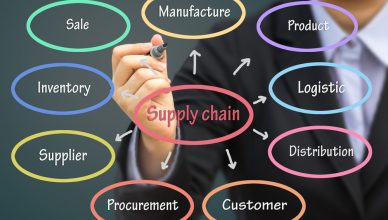Many business owners set performance goals that support becoming the best logistics company out there. Yet, many don’t even make it to conducting daily operations that leave much of a profit margin (which can be improved with route optimization software).
Why?
They set goals based on assumptions and not based on real data.
In a market as complex and competitive as the transportation industry, goals have to be specific.
Very few jobs involved in the process of getting a delivery to its destination on time go unmeasured. And, you would agree that this is not a business where rounding up figures is tolerated. Then, why are goals based on assumptions more agreeable than imprecise operations?
Goals based on assumptions lead to knee-jerk reactions when performance doesn’t match up to a promised delivery time.
So, accurately considering all the aspects required to make something happen is absolutely needed when establishing your organization’s goals. This can cover everything, from fuel consumption to the average work hours per department.
When running a complex company that traditionally has unforgiving profit margins, performance goals have to come from real numbers. And, if you find yourself grabbing for numbers out of thin air instead of consulting you company’s historical data, then this is written just for you.
Get ready to see a big difference in just about everything you do at work.
What Kind of Data Matters in Goal Setting?
First of all, pat yourself on the back. You’ve done well enough to keep your business running and, more importantly, you’ve realized that something just isn’t quite right. The goals you set seem completely reasonable to you; however, every week, your team seems to miss the mark.
Start by acknowledging that you should consider everything that goes into the actions supporting your goal to make the goal. A common ground for all transportation companies is the operating cost. Few things eat into your profit margin as operation costs going over budget do.
Think about some specific examples that you’ve read in your reports over the last few months. They are probably related to excessive fuel costs, unexpected repairs that keep one of your trucks off of the road, or increased insurance rates because one of your drivers was involved in an accident.
These examples may seem excessive, but relatable. Did you already know your business’ average daily costs or did these examples stand out because they just didn’t feel right? Did the cost of doing business that day seem oddly higher than what you expect?
Want To See For Yourself How Route4Me Can Boost Your Profits?
Whether you want to slash the time it takes you to plan routes for your drivers, increase the number of stops they can make, or keep your customers satisfied knowing that your drivers show up on time… Route4Me helps you achieve that!
This is where the important part comes in: What if you could know what the norm is with the help of collected data? What if you could accurately predict your drivers’ routes as well as their associated travel times, fuel consumption, and average deliveries per hour?
It’s easy to see how a goal could become reality with the aid of information.
Obviously, there is more to determining a driver’s cost per mile than only the previous suggestions. Logistics demands operation costs, such as scheduled maintenance, tires, insurance, fuel, and payroll.
There are also variable costs, such as fuel consumption on routes going through the mountains versus the great plains and unscheduled repairs.
Actively keeping track of expenses makes a difference in these expenditures.
One example that is common to logistics companies is the assumption that increasing sales will inherently raise the profit margins.
Without accounting for the operating costs required to support another truck, a business owner will not realize that the additional fuel consumption, work hours for the maintenance staff, and an additional driver almost negate the difference that the increased sales made.
Yet, it’s easy to realize just how difficult it is to predict expenses. The cost of fuel varies along different routes or a driver may have to make more stops. It’s simply too much information to manually collect for one driver, much less a fleet.
As you start to realize the importance of collecting information, you may consider hiring an analyst whose sole job is to keep track of all of this data. So, immediately your effort to save money just generated another paycheck that needs to be paid.
And, at the end of the day, it’s all about the profit margin. You’ve realized that the information is important, but there simply isn’t a feasible way of collecting it and keeping your profits high enough to justify all of the effort and risk assumed.
Then how do you get the information in an efficient and affordable manner?
You Need More Help, But Where Do You Get It?
There will always be a balancing act between the dispatch, operations, and drivers. From these big three, who would collect the data? Where can efficiencies be created if you were to have access to the data?
Have you identified ways in which your drivers could be more efficient? If the drivers indicate that they are overworked, do you have the information to decide between hiring a new driver and instituting changes?
Perhaps adding a person to dispatch or operations could help you find efficiencies. If adding one person in dispatch saves each driver 20% of their working time, as he or she would deliver accurate routing information, it would more than pay for the salary of the dispatcher. But, that is a tall order to actively track all the routes’ information at once.
Sometimes the most expensive period for a company is when it expands. Increasing drivers and infrastructure are often the cause of a gut feeling decision, but it’s arguably the least efficient.
The trick is to get the most out of your existing workforce before making additional investments. This is where the profit margin is generated.
Of course, the operations department can have a huge influence on the company’s efficiencies. But, there’s simply too much going on for them to actively manage the company manually.
So, what is a cost-effective answer to all parties gaining the information needed to make the most of the existing number of drivers?
Well… the answer is a vehicle route planning software that comes with a GPS tracking feature.
How Routing Optimization Software Can Help You
Fleet route planning software is the obvious answer to providing all parties with the required information. It collects all the data from your fleet and presents it in simple graphs.
It also comes with a dashboard feature that helps you visualize how each individual truck is doing, displays the overall costs, shows each route’s considerations, and so on. It can even plug in a potential customer and inform you whether it is cost-effective to take on their business.
There really isn’t a way of improving something that you’re doing, without measuring it to see the effects of your decisions. The better that you can see your fleet’s location and maintenance statuses, the better you can decide on how to support your business goals.
So, if you’ve collected the average fuel costs for the last few months, then you can accurately predict what your fuel cost will be this month.
Knowing how many miles a driver has traveled is essential for planning as well. It makes it easy to decide which drivers to keep, when it is time for layoffs. Performance is much easier to evaluate when you have the data.
All of this is made possible with route scheduling software. It reports and displays analytics that help you run your company. It also actively tracks all your trucks and displays the total miles driven, gas consumed, and profits per route.
Here are some more in-depth details about the specific information Route4Me’s planning and routing software could help you with.
Dashboard
As mentioned before, it provides a visual summary of your routing details for a set period.
You’ll find detailed graphs for the following data:
- Distance (Planned vs. Actual)
- Stops (Planned vs. Visited)
- Time (Planned vs. Actual)
- Routes per Day
- Average Time on Site vs. Allocated Service Time
- Stops per Day (Planned vs. Visited)
- Notes per Day
Activity Feed
The activity feed displays all the movements of your fleet. These include individual driver progress, note additions, and route modifications.
The activity feed shows the following two sections:
- Filtering and search options, where you can filter by team, type and date. You can even filter your search by Member, which shows the activity feed for a specific user,
- Latest activities in chronological order.
Reports
Route4Me’s fleet routing software provides detailed reports filled with data on routes. These reports are essential when seeking improved efficiencies. It is updated automatically every time you update an existing route or when you plan a new one.
Here is a screenshot of one of the reports. You can see that it shows the total routes traveled, the total routes traveled last week or year, and so on.
Costs
Ah yes, the ever important consideration: costs. Route4Me’s routing optimization software is specifically made to not only track all of the above data, but to also help keep track of your operating costs.
You can even input the expected fuel costs for a given region. You can also use the timeline tool to consider the fuel expenses along a certain route over varying time periods.
This shows that fleet route planning software and GPS tracking are absolute game changers when trying to compete in this market.
So, how do you create your business goals? Do you still plan to “go with your gut” based on assumptions?
Do you now see the importance of collecting data with regard to creating efficiencies? If so, do you really think that hiring an extra person in dispatching will make the same difference as easily viewable real-time data? Please leave your comments below, we’d love to hear from you.
Featured image credit : Robert Kneschke/Shutterstock.com
Want To See For Yourself How Route4Me Can Boost Your Profits?
Whether you want to slash the time it takes you to plan routes for your drivers, increase the number of stops they can make, or keep your customers satisfied knowing that your drivers show up on time… Route4Me helps you achieve that!






